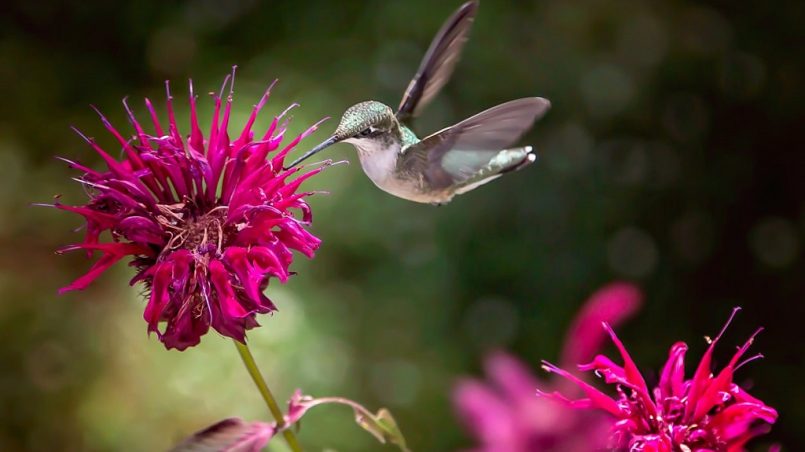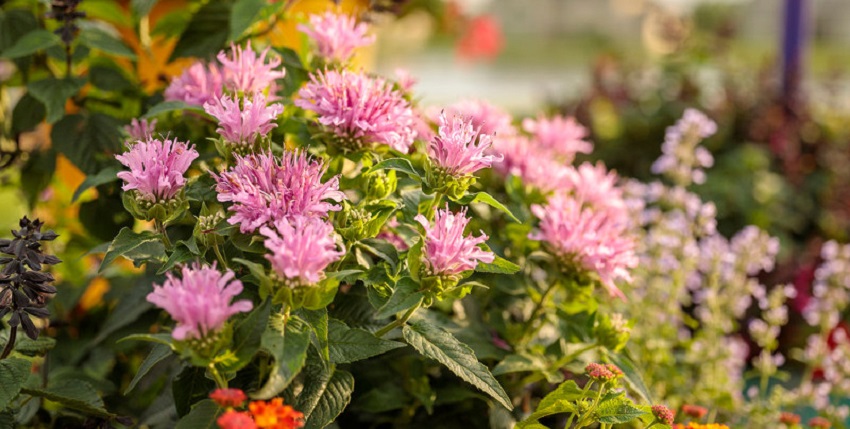If you are an avid gardener or nature enthusiast, you may have come across the beautiful and vibrant bee balm plant. Known for its striking colors and alluring fragrance, bee balm is not only a delight to the senses but also an important addition to any garden. In this article, we will explore the world of bee balm care, from growing and maintaining these plants to maximizing their beauty and benefits in your garden.
Introduction to Bee Balm Plants
Bee balm, also known as Monarda, is a perennial flowering plant native to North America. It belongs to the mint family and is loved by both humans and pollinators alike. The name “bee balm” is derived from its attractive flowers that attract bees, butterflies, and hummingbirds. With its tall stems and showy blossoms, bee balm adds a splash of color and charm to any garden. If you’re looking to add a touch of elegance and mystery to your garden, consider pairing bee balm with the stunning black dragon rose. Together, they create a unique and eye-catching display that’s sure to impress.
Choosing the Right Location
To ensure the success of your bee balm plants, it is essential to choose the right location in your garden. Bee balm thrives in full sun or partial shade, so find a spot that receives at least six hours of direct sunlight per day. Additionally, bee balm prefers well-draining soil that is rich in organic matter.
Planting Bee Balm
Once you have identified the perfect location for your bee balm plants, it’s time to get them in the ground. Follow these steps to ensure proper planting and establishment:
- Prepare the soil: Before planting, amend the soil with organic matter such as compost to improve its fertility and drainage.
- Dig a hole: Dig a hole that is slightly larger and deeper than the root ball of your bee balm plant.
- Place the plant: Gently place the plant in the hole, ensuring that the crown is level with or slightly above the soil surface.
- Backfill the hole: Fill the hole with soil, gently firming it around the plant.
- Water thoroughly: After planting, water your bee balm thoroughly to help settle the soil.
Watering and Fertilizing Bee Balm
Proper watering and fertilizing are crucial for the health and growth of your bee balm plants. Here are some tips to keep in mind:
- Watering: Bee balm requires regular watering, especially during periods of drought. Aim to keep the soil consistently moist, but not waterlogged.
- Mulching: Applying a layer of organic mulch, such as shredded bark or compost, around the base of the plants can help retain moisture and suppress weeds.
- Fertilizing: Bee balm generally does not require heavy fertilization. However, a balanced slow-release fertilizer can be applied in early spring to promote healthy growth and vibrant blooms.
Pruning and Deadheading
To keep your bee balm plants looking their best, regular pruning and deadheading are necessary. Follow these guidelines:
- Pruning: In late fall or early spring, prune back the stems of your bee balm plants to a height of 6-8 inches. This helps maintain a compact shape and encourages new growth.
- Deadheading: Remove faded flowers regularly to promote continuous blooming and prevent self-seeding. This also helps redirect the plant’s energy towards healthy growth.
Common Pests and Diseases
Like any other plant, bee balm is susceptible to certain pests and diseases. Here are some common issues you may encounter:
- Powdery mildew: This fungal disease causes a powdery white coating on the leaves. To prevent or manage powdery mildew, ensure good air circulation, avoid overhead watering, and remove and destroy infected leaves.
- Spider mites: These tiny pests can cause yellowing leaves and webbing. Use insecticidal soap or neem oil to control spider mites.
- Aphids: Aphids are small insects that feed on the sap of the plant, causing distorted growth. If infested, you can blast them off with a strong jet of water or use insecticidal soap.
Conclusion
Bee balm is a stunning plant that brings beauty, fragrance, and pollinators to your garden. By following the care instructions outlined in this article, you can ensure the healthy growth and longevity of your bee balm plants. So why not add this captivating and beneficial plant to your garden today?
FAQs (Frequently Asked Questions)
- Do bee balm plants require a lot of maintenance?
Bee balm plants are relatively low-maintenance. Regular watering, occasional fertilization, and pruning are usually sufficient for their care. - Can I grow bee balm in containers?
Yes, bee balm can be grown in containers. Ensure the container has good drainage and provide adequate sunlight and water. - How long do bee balm plants bloom?
Bee balm plants typically bloom for several weeks from mid-summer to early fall, depending on the variety and growing conditions. - Are bee balm plants deer-resistant?
Some varieties of bee balm have a strong aroma that repels deer. However, it is best to research specific varieties that are known to be deer-resistant. - Can I divide and propagate bee balm plants?
Yes, bee balm plants can be divided and propagated in early spring or fall. This is a great way to expand your bee balm collection or share plants with others.
Remember, bee balm care is a rewarding experience that not only adds visual appeal to your garden but also helps support pollinators. So go ahead and embrace the beauty and benefits of bee balm plants in your outdoor space!




